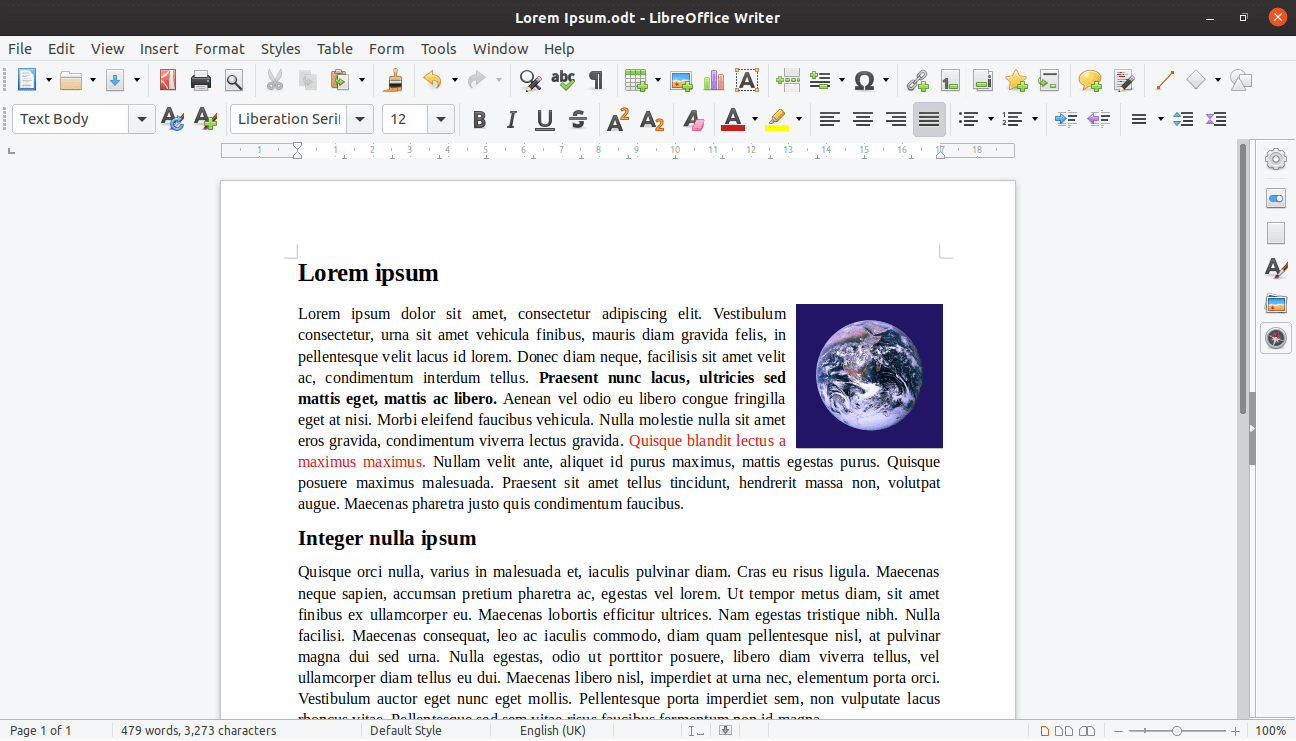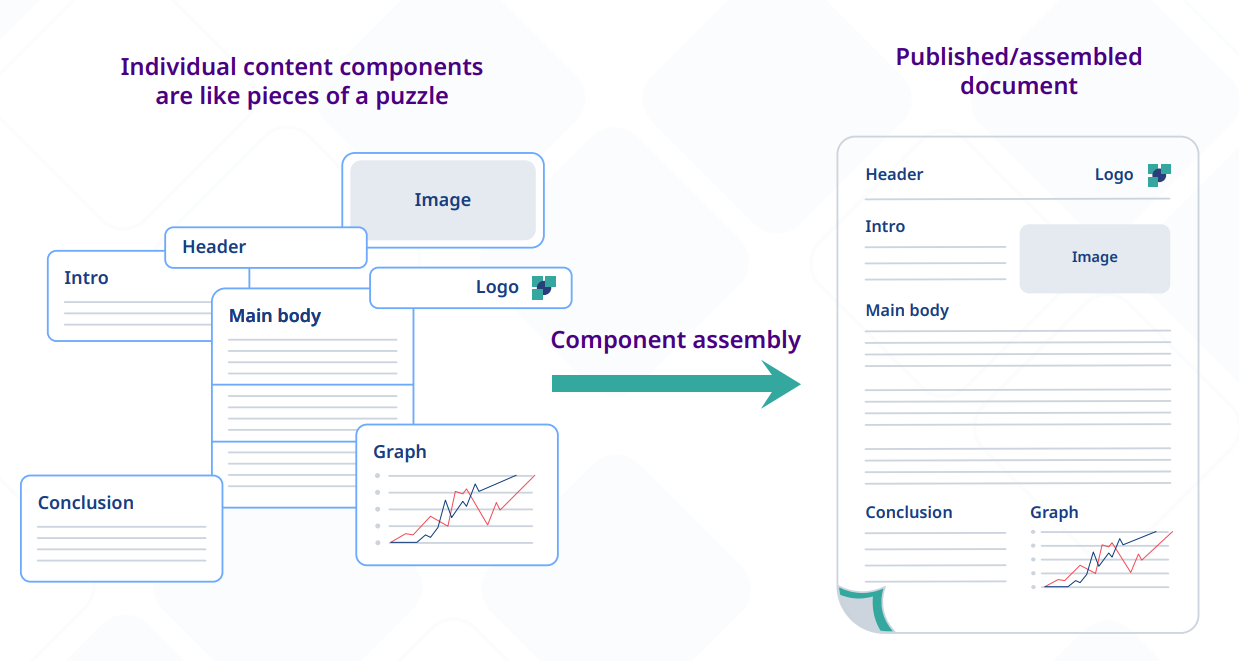Trapped in the document paradigm

Why paper-based formats are holding your business back (and what to do about it)
Most organizations still treat digital content as if it were paper. Microsoft Word files, PDFs, and SharePoint pages are essentially digital printouts – descendants of the paper document mindset. It’s comfortable and familiar: a “document” feels like a self-contained, tangible thing we can draft, edit, and publish. But this comfort comes at a cost.
As content strategist Alan Porter observed, even flashy digital publications often remain “a paper-based paradigm with a page-based sensibility,” treating text as static blobs of content on a virtual page. In other words, we’ve ported our old print habits into the digital world without rethinking the model. We build “horseless carriages” – new technology used in old ways – instead of truly transforming how content is managed. This standard persists not because it’s the best way, but because it’s what we know.
And while it may not seem broken on the surface, it’s creating hidden cracks beneath our feet.
How we got stuck
To understand why we’re stuck, we need to understand what documents really are.
A document is a static, linear container – a bound set of pages, physical or digital. It’s designed to be read from top to bottom, distributed in full, and treated as a final product.

That model made perfect sense in a paper-based world. It made sense when manuals were printed, policies were filed in binders, and PDFs were made to look like physical documents. But today’s content requirements are fundamentally different. And that’s where the trouble begins.
The document paradigm
On the surface, documents feel like a tidy way to manage content. But underneath, they generate layers of inefficiency – friction points that grow exponentially as content volumes rise.
The search for what already exists
There's something almost absurd about the modern content professional's daily routine. A significant portion of their time isn't spent creating, refining, or strategizing. It's spent looking.
Finding the right content shouldn't be a job in itself. Yet it often is. When information is scattered across disconnected systems – buried in folder hierarchies, trapped behind unclear filenames, or siloed in tools that don't communicate – the simple act of locating existing content becomes a significant undertaking.

And when that search yields nothing? The cycle begins again. The same product specification gets rewritten. The same compliance statement gets recreated. The same policy explanation gets crafted anew, with slight variations that serve no strategic purpose. The duplication happens organically – a natural consequence of information being effectively invisible.
What emerges is an ecosystem of content that's simultaneously abundant and scarce. Abundant in volume, scarce in accessibility. Organizations end up with libraries of near-identical content, each variant slightly different, none serving as a definitive source of truth.
The multiplication of effort
The real complexity reveals itself when change becomes necessary. In a document-centric world, updating information means tracking down every instance where that information appears. It means opening files, navigating to the relevant sections, making edits, and ensuring consistency across variations.
Beyond the inefficiency lies a deeper problem: fragility. The process relies entirely on human memory and diligence. Miss one document, and you've introduced inconsistency. Make a small error in one file, and that error propagates through whatever gets copied from it.
The work becomes mechanical rather than strategic. Time that could be spent on content innovation, user experience improvements, or strategic messaging gets consumed by the administrative overhead of maintaining parallel versions.
The personalization paradox
The document model creates a curious paradox around personalization. The more you want to tailor content to specific audiences, the more complex your content management becomes.
Each customization requires its own document. Each audience segment needs its own version. Each market, product line, or regulatory requirement multiplies the maintenance burden. The very thing that should make content more effective – targeted messaging – becomes a source of operational complexity.
This scales poorly. What starts as a manageable set of variations quickly becomes an unwieldy collection of similar-but-different documents, each requiring individual attention when changes are needed.
The translation burden
As for localization, when content is structured as complete documents, even minor changes require reprocessing entire files. A single updated paragraph means retranslating, reviewing, and republishing pages of unchanged content.
This creates a peculiar economic dynamic: the cost of translation becomes divorced from the actual scope of change. Small updates carry disproportionate overhead. Organizations often delay necessary updates simply because the translation and review process feels too cumbersome for the change involved.
The collaboration bottleneck
Perhaps most tellingly, the document paradigm struggles with the collaborative nature of modern content creation. Multiple contributors working on the same information creates versioning challenges that are both technical and social.
Files get passed between team members, accumulating tracked changes and comments. Email threads become repositories of context and decision-making. The question "Which version is current?" becomes a recurring theme in team communications.

The real issue goes beyond tool limitations. There's a fundamental mismatch between how content is created (collaboratively, iteratively) and how documents are structured (as complete, standalone entities).
The efficiency illusion
What emerges is a system that feels organized but operates inefficiently. Documents provide a sense of structure and familiarity, but they create work patterns that scale poorly. The individual document seems simple and manageable. The collection of documents becomes complex and unwieldy.
This is the document paradigm's central tension: the tools that make content feel manageable at small scale become sources of complexity at larger scale. What works for a handful of files becomes problematic for hundreds. What's efficient for a small team becomes cumbersome for a large organization.
“These folks still think about content from a document paradigm. “Books” are written as monoliths, even though they are using structure to create and store the information. They have 15- and 20-page topics that go on and on, just like a chapter of a book. The content is neither nimble nor reusable. It is simply a really big blob component.”
The challenge isn't that documents are fundamentally flawed, it's that they're optimized for a different kind of content operation than what most organizations actually need. They excel at creating discrete, standalone pieces of information. They struggle with the interconnected, reusable, dynamic content that defines modern communication.
What changes when you break free
If the document model is the problem, what’s the alternative?

It begins with a fundamental shift in perspective. Instead of thinking about content as a collection of finished documents – complete, static, self-contained – you start to see it as something inherently modular. Content becomes a set of building blocks, each with its own purpose and meaning, designed to be combined and recombined as needed.
This is the idea behind structured content. Rather than writing a document top to bottom, you break content down into smaller, reusable chunks – each with a clear purpose and meaning. A warning statement. A product specification. A troubleshooting procedure. Each element is authored once, then assembled into whatever outputs your organization requires.
It’s like building with Lego bricks. You don’t start from scratch every time – you mix, match, and reuse. That’s what gives this model its power.

The ripple effect of single-source updates
When content exists as shared components, changes propagate automatically. If the same paragraph appears in 10 places, you update it once, not 10 times. Consistency becomes a byproduct of the system rather than a goal you have to actively maintain. You don’t have to cross-check dozens of files. You don’t have to remember which documents that update might affect. You just do it once, and it flows through.
You also write less. A lot less. Structured content unlocks massive reuse. That same safety warning you’ve copied into 20 manuals? Now it’s a single chunk, pulled into each guide automatically. Many organisations find they can reuse over half their content once they make this shift. That means fewer hours spent duplicating work — and more time improving the content that matters.
And because content is structured, it’s flexible, meaning it can be assembled into multiple formats without reauthoring. The same information that populates a printed manual can feed an online knowledge base, power a chatbot response, or generate a region-specific product sheet. You're not creating parallel content streams, you're configuring the same content for different contexts.
This flexibility extends to personalization and audience targeting. Customizing content for specific markets or user groups becomes a matter of selecting and arranging components rather than duplicating and modifying entire documents.
Perhaps most importantly, structured content separates content creation from content presentation. Writers focus on meaning and clarity. Designers and systems handle the layout. Reviewers see exactly what they need to approve — not five conflicting versions with slightly different wording.
At first, this approach can feel a little alien. The familiar rhythm of opening a file, writing from start to finish, and saving a complete document gets replaced by something more atomic and systematic.
But once it clicks, the simplicity becomes obvious.
No more hunting for the right file. No more wondering which version is latest. The "where else does this appear?" question becomes irrelevant because the system already knows.
Content as infrastructure
Structured content transforms content from a collection of individual assets into something more like organizational infrastructure. Content that can be trusted to stay consistent. Content that scales without proportional increases in maintenance overhead. Content that adapts to new requirements without requiring complete recreation.
Implementing structured content moves organizations from "content locked in documents" to "content as discrete, reusable components in a semantic framework."
When documents no longer cut it, what’s next?
The change isn't merely operational. It's conceptual. And once made, it reshapes how organizations think about information itself.
The future belongs to structured content
Why make this change now? Because content demands in the enterprise are only growing. More channels, more personalization, more compliance requirements – the pressure on content teams is mounting, and the old document-centric ways simply won’t scale to meet the need. We are at a point where “breaking free from the document mindset” is essential to unlock the next level of efficiency and value.
It can feel daunting to uproot long-standing habits. Yet, the irony is that by clinging to the familiar comfort of documents, many organizations are trapping themselves in a costly status quo. The document paradigm may feel safe, but it’s like a comfortable cage – one that limits agility and growth. By contrast, a structured content approach offers a way out: a more agile, reusable, and intelligent content ecosystem that saves time, cuts costs, and opens the door to personalization and scalability that were impossible before.
Content is central to customer experience, knowledge transfer, and even AI applications. So the question is no longer “Why change?” but “How much longer can we afford not to?” The companies that have made the leap are reaping the rewards in efficiency, consistency, and speed. Those that don’t may find themselves stuck in the past – with their content (and their teams) straining under the weight of that old paper paradigm.
The most profound changes often begin with the smallest recognitions: The document was never the destination - it was just the container we happened to use along the way.
The journey continues
This is the third installment in our ten-part series exploring what it really takes to move from unstructured to structured content - not just the technical transformation, but the mental and organizational shifts that make it possible.
Part one: “If it’s not broken, why fix it?”
Part two: A practical guide to structured content migration and streamlining content operations
Look out for blog four, coming soon.
Ready to explore what structured content could unlock for your organization?
Download our white paper to see how others are making the transition – and discover the practical steps that can start your own transformation.
